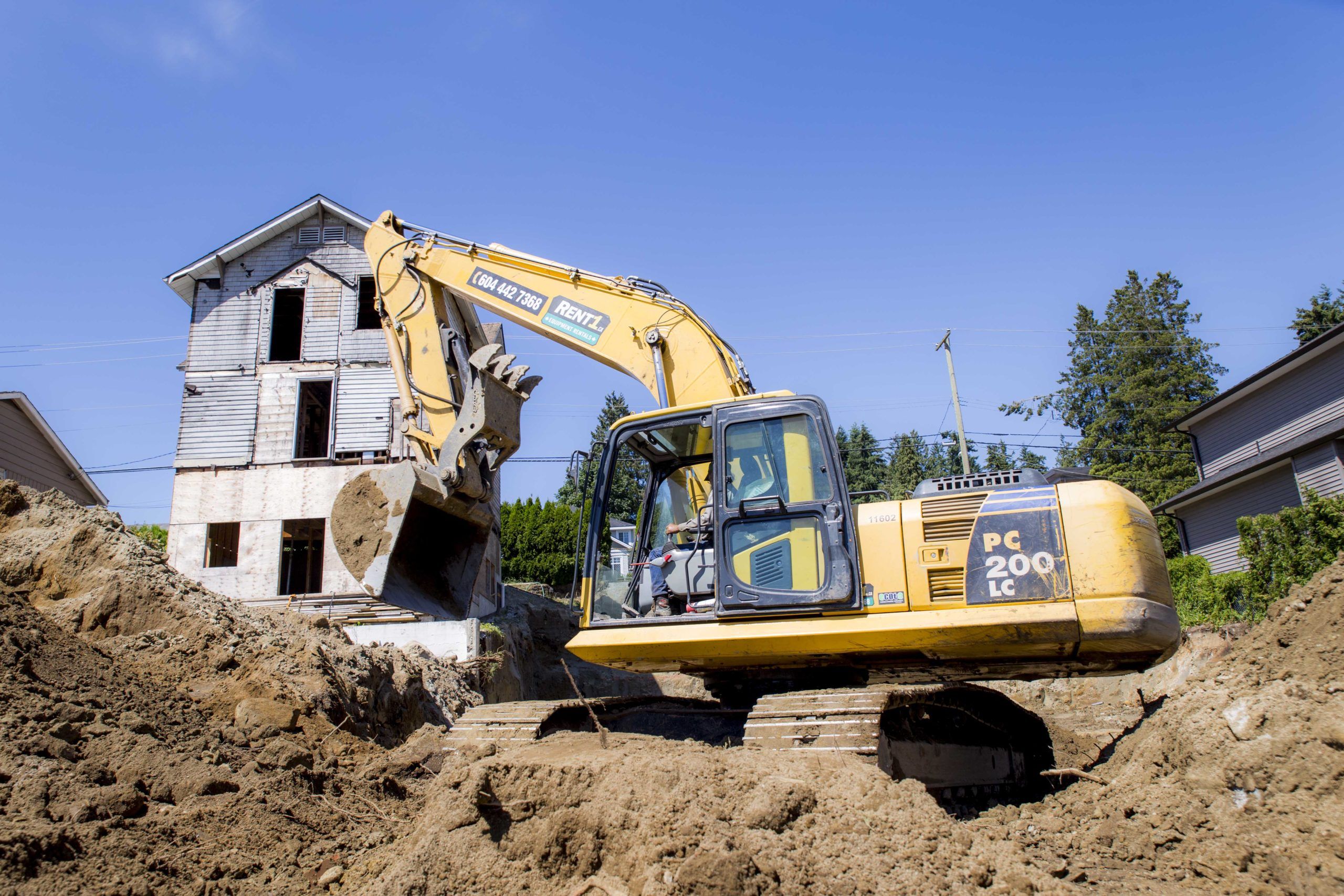House Demolition: Things To Know Before You Begin
There are many reasons why you may need to demolish a house in Vancouver, Surrey or Langley in British Columbia. You may have purchased a dilapidated home that you plan to tear down and rebuild on the existing foundation. Part of your home may have been damaged by a natural disaster and it is too unsafe to repair or keep as is.
Before tearing down the walls and digging up the concrete foundation, there are several things you should do to ensure that you have a safe and productive tear-down house project, such as selecting the right permits, performing inspections and locating utility lines. You should also have the right equipment for the job, as Rent1 can provide you with the rental excavators and dump trucks to make the job easier. Review our quick checklist of things you should know about performing a residential demolition.
Getting the Right Permits
Any demolition done in Vancouver will require the right permits based on the age of the house. There are four types of permits that are available.
- Demolition Permit – Recycling and Reuse Requirements: This permit is for homes that were built before 1950. You’ll also need to have a Recycling and Reuse Plan and a Compliance form if you plan to rebuild the new house by using any salvaged materials.
- Demolition Permit – Recycling and Deconstruction Requirements: This permit is for homes built before 1910 or are listed as heritage houses.
- Demolition Permit without Recycling Requirements: You can obtain this permit if your home was built in 1950 or after and you don’t plan on recycling materials. Keep in mind that drywall must be recycled as the city of Vancouver does not allow drywall to be dumped into a landfill.
- Demolition Permit for Multifamily and Commercial/Industrial Buildings: The permit covers any investment multi family homes. commercial buildings and industrial facilities.
Inspections for Hazardous Materials
Many older residential homes may have been built using asbestos-containing materials in siding, ceilings and flooring. Since asbestos is a hazardous material, it must be torn down and removed with care so workers do not inhale any asbestos fibers.
Demolition contractors have the training required to inspect and tear down building elements that may contain asbestos. They can minimize exposure and remove it so the asbestos can be properly disposed.
Disconnecting Utility Services
Before demolition, you want to find and disconnect all water, gas and electrical lines. If they are still connected, heavy equipment could pull out pipelines and electrical wires, damaging underground systems or electrical lines leading to poles that could impact your neighbor’s utilities.
Always contact a utility company so they can find and terminate all connections in a safe manner.
Interior Demolition VS Exterior Demolition Processes
There are vast differences with interior demolition versus exterior demolition. With interior demolition, you don’t just start swinging a sledgehammer at every ceiling and use a circular saw to cut down every wall stud. There are load bearing walls that support the other levels of the home and the roof that need to be left up until the final demolition.
The interior demolition process should focus on removing, junking or salvaging building materials while following a demolition plan. Once the interior demolition is completed, the exterior demolition process can take place to knock down the exterior and remaining interior wall studs, Then the concrete foundation can be removed.
A range of demolition equipment can be used for the demolition process. From wrecking balls to excavators, you can rent the equipment you need to speed up the demolition work and when breaking up concrete.
Hauling and Recycling
The last part of the demolition process to consider is how to get everything taken away from the property. In addition to excavators to tear down walls, you will also use them to lift up large sections of siding, brick and concrete debris.
You’ll want to rent the right size dump truck and bins for junk removal. In addition, consider how you will store recycled and reused materials that you plan to use during the new home construction.
Select Rent1 for Heavy Equipment Rentals
When deciding on the rental equipment that you will use for your home demolition project, turn to Rent1. We have the dump trucks, excavators and other heavy equipment to haul debris, tear down walls and break up concrete to make your material handling work easier.
Our large fleet has 20 ton to 35 ton excavators, and dump trucks that can handle 60,000 lbs payloads, for midsize and large scale demolition projects. Contact us today to learn more.

